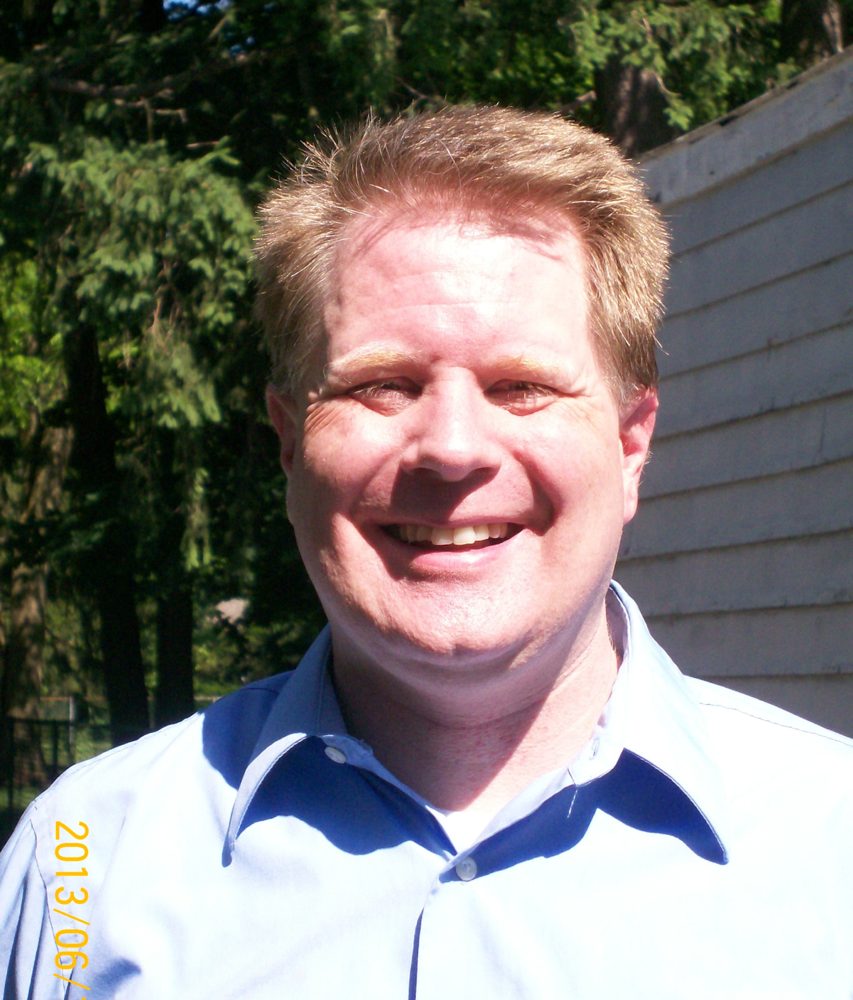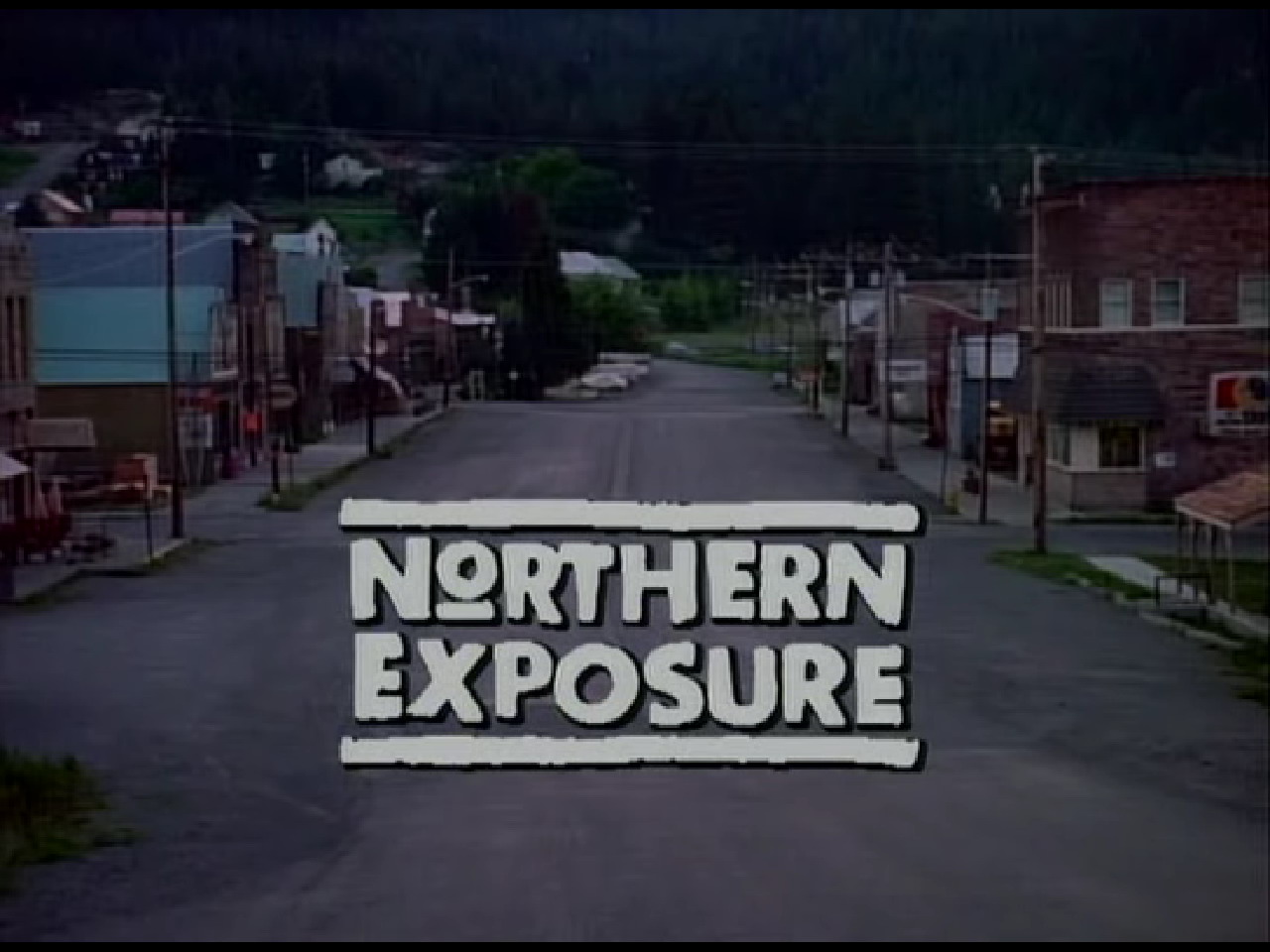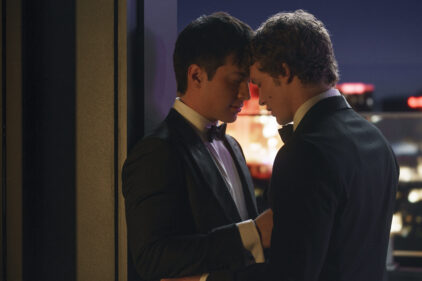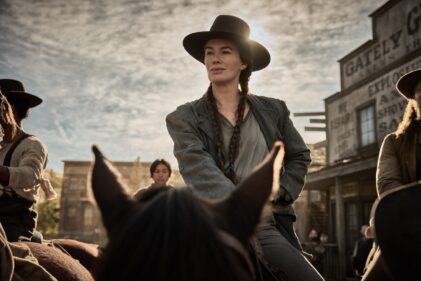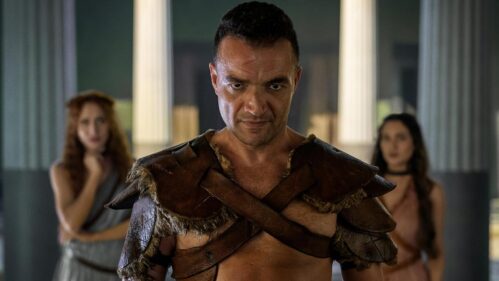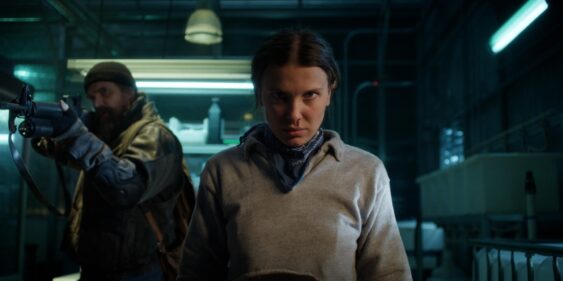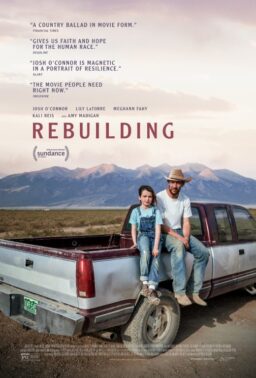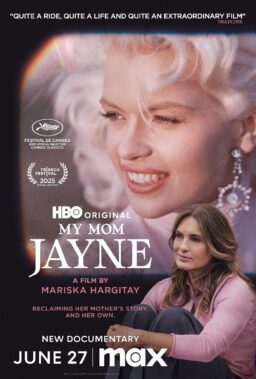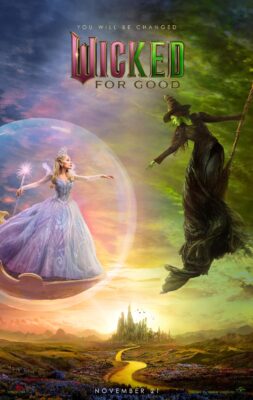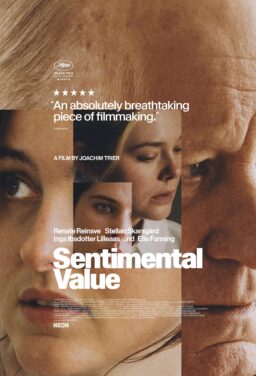“We
used Alaska more for what it represents than what it is. It is disconnected
both physically and mentally from the lower 48, and it has an attractive
mystery.“
—Joshua
Brand, co-creator of “Northern Exposure”
CHRIS: Soapy once told me that the thing he loved most about
country music was its sense of myth. There’s heroes and villains, good and bad,
right and wrong. The protagonist strolls into bar, which he sees as a
microcosm of the big picture. He contemplates his existence and he asks
himself, ‘who’s that babe in the red dress?’ All right. Well, you know the way
I see it, if you’re here for four more years or four more weeks–you’re here
right now. You know, and I think when you’re somewhere you ought to be there,
and because it’s not about how long you stay in a place. It’s about what you do
while you’re there. And when you go, is that place any better for you having
been there? Am I answering your question?.
JOEL: Uh, no, not really.
—”Soapy Sanderson” (“Northern Exposure,” Episode 1.3)
JOEL FLEISCHMAN
The secret to Dr. Fleischman was in his eyes.

In the pilot alone, they could be darting, distrustfully
analytical (as when he arrives in the remote outback of Cicely, Alaska, having
been lied to about his presumed term of medical service in Anchorage, and
immediately scopes out the one-street downtown with its worn-out shop fronts
and wandering moose); they expressed puzzlement (as in his first encounters
with Marilyn, the taciturn Native American who turned up at his office
reception desk for work, despite never actually being hired); they expressed
great fear (as town patriarch Maurice pulled a shotgun on him in a fishing
boat); and they could be playful and sarcastic (as when he meets his new
land-lady, the bush pilot Maggie, and immediately kicks off a screwball
relationship that would make Donald Ogden Stewart reach for his pen).
The eyes were everything, and it’s through them that we first got
a glimpse of television’s future.
Debuting as an eight-episode CBS summer series on July 12, 1990,
“Northern Exposure” immediately dropped viewers into a space that
felt both alien and warmly inviting. “Exposure” could be called
“The Sentimental Education of Joel Fleischman”: a young doctor from
New York (Rob Morrow) goes to Alaska to fulfill his medical school loan
obligations (the state paid for his training), but instead of being based in
Anchorage as promised, he is shipped to the small, quirky town of Cicely, one
of 845 residents living in the middle of nowhere. There, he encounters
townspeople who include Chris Stevens (John Corbett), an ex-con philosopher who
is the sole DJ at KBHR, the town’s sole radio station (centerpiece-by-default
of the grandly-named “Minnifield Communications Network”); radio
station owner Maurice Minnifield (Barry Corbin), a wealthy, pompous, bigoted
astronaut hero with dreams of turning Cicely into the Riviera of the northwest;
Holling Vincoeur (John Cullum), a kindly
63-year old bar owner, and Shelly Tambo (Cynthia Geary), his wide-eyed, 20-year
old ex-beauty queen paramour; Marilyn Whirlwind (Elaine Miles), whose own
subtly expressive face acts as a kind of silent Greek chorus on Fleischman’s
many missteps; and Ruth-Anne Miller (Peg Phillips), the 70-something shop owner who has seen
everything, yet somehow remains one of the program’s least-cynical characters.
Most importantly, he meets two residents around whom his spiritual
journey will be based: Ed Chigliak (Darren E. Burrows), a young Native American
filmmaker and budding cinephile, and Maggie O’Connell (Janine Turner), the
Grosse Pointe refugee whose relationship with Fleischman will form the backbone
of the series. It is this triangle of interactions I want to use as a metaphor
in what follows, because I think Joel, Ed, and Maggie each offer overlapping
windows on “Northern Exposure”‘s role in a broader TV landscape, and
why the program still resonates.

Joel looks
out at his seemingly barren new home and initially fails to notice its rich,
playful magic. Similarly, the notion of a summer replacement series as being
anything but a burn-off of a failed pilot, or episodes of an already-cancelled
show, was relatively new in 1990, and no one really expected “Northern
Exposure” to be different. “I don’t know whose idea it was to launch
in the summer,” Rob Morrow would recall to Entertainment
Weekly 20 years later. “I don’t think anyone had any idea what they
had on their hands.” Despite solid ratings and strong reviews, it didn’t
continue into the fall season, disappearing for six months while its creators,
John Falsey and Joshua Brand, and production studio Universal negotiated with
the network for a larger budget. Somehow, its reputation only grew in its
absence; in a 1991 piece for “Entertainment Weekly” (archived at the
invaluable fan site Moosechick Notes), writers Mark Harris
and Kelli Pryor quote Falsey’s recounting of a screening of an episode at
the Los Angeles County Museum of Art:
“It gave us a real jolt. For the first time, we heard 400 people
responding. It was incredibly refreshing.”
Not everyone loved it. Richard Zoglin of Time would
almost completely miss the point, complaining, “‘Northern Exposure’ is
less a realistic picture of Alaskan life than a big-city yuppie’s romantic
small-town fantasy.” But that was a distinctly minority view. When the show came back, it was a top
20 hit, eventually rising to number 11 in the ratings. The program’s success
would help to make the summer debut—and its corollary, an established show
airing new episodes—a growing TV model for everything from teen programs like
“Beverly Hills 90210” (which only found its audience by airing new
episodes in the summer of ’91) and “The OC,” to
light-hearted/light-headed USA dramas like “Covert Affairs,” to
“Golden Age of TV” prestige bait like “True Detective.”
Joel’s
fish-out-of-water status made him the
show’s creative emblem: for all his brusque insistence on his “New
York” identity and his initial dislike of his new home, he’s also drawn to
its residents, its oddities, and its insatiable desire to flip its own script.
The epigraph from Brand above captures the program’s (and Joel’s) need to
transmogrify itself every week: as a “Jew doctor from New York” (to
quote Maurice’s description of him), Joel is “an attractive mystery,”
as fascinatingly strange to the townies as they are to him, and “Northern
Exposure” would use every stylistic and narrative trick it could as as a
way of expressing the need to bridge those cultural gaps.

The show
was an early example of a dramedy without a laugh track, juggling moods and
respecting its audience’s ability to get the joke in a way that would help
create space for future comedy/drama hybrids like “The West Wing,”
“Parks and Recreation,” “Buffy The Vampire Slayer” and “Gilmore Girls” (whose small-town
quirk, screwball-meets-melodrama tone, and character archetypes owe almost
everything to “Exposure”). It
was also a show that respected its audience’s intelligence, wisely ignoring
“high/low”divisions of culture
and assuming viewers would appreciate references to both Voltaire and
“Aliens,” Walt Whitman and the Home Shopping Network (in that sense,
the program’s recurring fascination with show-tunes is not just another entry
point for Joel’s Manhattan-centric worldview, or a playful way to explore and
tweak the homophobia of Broadway super-fan Maurice, but also a tip of the hat
to an earlier art form’s ability to encompass the whole eight-eighths of
American popular life).
Joel’s eyes
were also a creative window: He might have been resistant to the town’s
quirkiness (in one episode, he frantically mourns his growing assimilation by
renting “The Godfather” and “Dog Day Afternoon,” as if they
will act as New York booster shots), but he was also its pulsating center, and
so many of the program’s “dream episodes” or pastiches start from
Joel’s perspective literally shifting. In one episode, a bump to the head sends
him into a dreamscape where he is “Jules,” his own ne’er do well
twin; in another, a bout of insomnia causes Joel’s view of the town to
dramatically improve, in a subtle parody of “Charly” (1968) that also
sees him enthusiastically coaching the Cicely basketball team; in still
another, Joel’s accidental ingestion of a Native American herbal remedy
transports him to a version of New York where his dreams of big-city life intermingle
with wildly different versions of the program’s regulars.
“Northern
Exposure” took the stylistic playfulness pioneered by
“thirtysomething,” “Moonlighting” and other ’80s shows,
and made it more organic to the program’s usual mise-en-scene. Falsey and
Brand’s imagery was no less surreal or playful, but was more fully integrated
into the program’s ongoing camera and color schemes, so the line between
fantasy and reality wasn’t as clear or self-conscious; this confusion of space
only intensified the show’s richness (it’s probably no coincidence that
“Exposure” debuted the same year as “Twin Peaks,” which it
references in one first-season episode, or that “Exposure”‘s
show-runner in its final two seasons was David Chase, who would use a similarly
dream/reality template to great effect on “The Sopranos”). Its dense
intertextuality and fearlessness in building its narratives around Orson
Welles, Ralph Waldo Emerson and—most spectacularly—Gabriel Garcia Marquez (in
an episode-long homage to the magical realism of “One Hundred Years of
Solitude”) helped expand what kinds of stories could be done on a network
show, breaking ground that would be followed by the daring of cable and
“netlet” shows in the ensuing 20 years. Its open-ended narratives, ensemble
casts, often melancholy and wistful tone—all of this speaks to a TV of the
future as much as the TV of “Exposure”‘s actual airdates. The show
was a great success, won several Emmys and Peabodys, and launched many of its
stars into great futures. And then it all came crashing down.

MAGGIE O’CONNELL
Like Maggie—the Detroit debutante who escapes into a new life in
the Alaskan wilds—”Northern Exposure” and its creators didn’t come
out of nowhere. John Falsey and Joshua Brand had been successfully working in
TV for nearly two decades: As writers on “The White Shadow”; as
writers and producers on Steven Spielberg’s “Amazing Stories”; and
most impressively, as the co-creators of three critically acclaimed shows in
the ’80s and early ’90s—”St. Elsewhere,” “A Year In The
Life,” and “I’ll Fly Away”.
As Harris and Pryor noted in their EW piece, Falsey and Brand
wanted to use the “displaced doctor” idea they’d pitched to CBS to
get at something richer:
“From ‘St. Elsewhere,’ we were kind of doctored
out,” says Brand. “Both John and I could hang up a shingle at this
point.” The producers instead looked to European films for inspiration,
and saw, in Bill Forsyth’s “Local Hero” and Lasse Hallstrom’s
“My Life as a Dog,” in Giuseppe Tornatore’s “Cinema
Paradiso” and Federico Fellini’s “Amarcord,” shades of the
series they wanted. “America,” says Brand, “tends not to make
those gentle, warm, offbeat character comedies. We always say that we wanted to
create Alaska as a state of mind, a place where people could recreate
themselves in a nonjudgmental universe.”

Maggie is Joel’s foil, not only because of their obvious screwball
dynamic, but because they are actually not all that dissimilar from each other
(and thus can quickly find the right cutting words for one another during their
arguments). For all of Maggie’s constantly-proclaimed independence, she also
comes to Alaska partially out of obligation, in this case to a boyfriend doing
research in the area. She criticizes Joel’s misanthropy and disconnection from
Cicely, but her job isolates her for several hours a day in a small plane, and
carries her away from the town she fetishizes. Like Joel, she projects a
brusque exterior, but it masks a great deal of hurt, which finds its expression
in part through her need to make dioramas of her dead boyfriends. While Maggie has unfortunate luck with boyfriends, she also has a quasi-magical ability to save and restore
men’s health (as in one early episode when a single, fairy tale kiss restores
DJ Chris’s voice, or in the extended fourth season relationship between Maggie
and a hypochondriac played by Anthony Edwards). And while Maggie is certainly
someone who longs to “recreate themselves in a nonjudgmental
universe,” that non-judgment is severely restricted to herself—like
Joel, she is quick to berate those (like a female Gulf War veteran who opposes
women in combat) who don’t match her worldview.
It’s a wonderful complexity that Janine Turner captures well, and
one that reflected her own background, albeit in a mirror universe kind of way.
Her journey from Fort Worth, Texas to New York (where, at 15, she was the
youngest-ever Wilhelmina model) was the reverse of Maggie’s Alaskan escape from
plush Grosse Pointe, but no less of a sea-change. She pursued acting in Los
Angeles, but hated the TV work she was getting. “I had no respect for what
I was doing when I left,” she told TV Guide during
“Exposure”s first season. A return to New York to
study acting coincided with relationships with Alec Baldwin and Mikhail
Baryshnikov, and when that period was over, she found herself, she said, pacing
around New York’s Diamond District, trying to figure out if she should pawn
Baldwin’s engagement ring to pay down numerous debts. That was when the
audition for “Exposure” came, and she was off to Washington State
(where the show actually filmed).
Turner’s lightning-quick emotional shifts are crucial to Maggie’s
prismatic character—in the space of a single scene, she can move from
sarcastic to empathetic to enraged, and it almost always registers as real. Her
eyes, like Morrow’s are remarkably expressive, and much of the show’s power
comes from how the program builds its shot-reverse shot dialogues or two-shots
around their characters. As the show develops, so does
Maggie, and a great deal of whatever meaning “Exposure”‘s relatively
disappointing final seasons have comes from how well Turner registers Maggie’s
growing desire for something more stable and heartfelt than her previous,
itinerant existence.
“Northern Exposure” has a shelf-life built into it
premise—Joel is obliged to be in Cicely for four years (with an extra year
tagged on midway, almost as a sly commentary on Rob Morrow’s tempestuous
contract negotiations), after which he will presumably return to New York.
Narratively, there are outs if the show became a hit—Joel grows to like
Alaska, Joel stays because he falls in love with Maggie—but each one has the
potential to upset the program’s delicate emotional calculus. So it probably shouldn’t be that surprising that a
show with such creative power, commercial success and critical acclaim had such
a quick burnout. Given her ability to express several emotions at once, it also
shouldn’t be surprising that Maggie is at the center of two of its notable
signs of change.

When Morrow threatened a walk-out over his salary, the producers
brought in a potential replacement as Maggie’s sparring partner—Mike (Anthony
Edwards), a hypochondriac lawyer who moves to Cicely because of its clean air,
lives in a bubble-like house and obsesses about germs and the degradation of
the environment. When Mike appears at the start of the show’s fourth season in
1992, he is funny and odd, and an interesting extension of the show’s
willingness to go almost anywhere. “Northern Exposure” was coming off an
Emmy win as Best Dramatic Series, had ended the previous year with a remarkable
episode about Cicely’s founding, and was clearly at the peak of its powers.
That might
explain why Falsey and Brand thought they could get away with such a preachy,
heavy-handed character, and then devote much of the season to his increasingly
uninteresting follies. It was the show’s first real misstep,
and had the writers been willing to more self-critically explore the flaws of
their Mary Sue-like Bubble Boy, it would have made more sense to pair him with
Maggie (who is a much more interesting take on moral certainty). Still, even if
the the move was predicated in part on finding a Morrow replacement, it allowed
Maggie to show a greater range of empathy than she’d been previously allowed,
and that carried over into the fifth season, which saw a deepening of the
Maggie-Joel relationship and an even quirkier tone than before. Mike had left,
but David Chase had arrived.
Chase had
been the show-runner on Falsey and Brand’s “I’ll Fly Away,” and
according to Brett Martin’s book “Difficult Men,” took a jaded view
of its more acclaimed sister series. “The people who worked on ‘Northern
Exposure’ thought they were curing cancer and reinventing drama,” Chase
says in the book. Notably, he took aim at the Falsey/Brand mission statement:
“The premise of the show, as I found out later, was that it was a, quote,
‘nonjudgmental universe.’ Huh? That’s something I couldn’t understand. To me it
was so precious, so self-congratulatory…I felt it was a fraud at its
core.“
As
documented in Martin’s book, the cancellation of “I’ll Fly Away”
after two seasons dovetailed with a strain in the Falsey/Brand partnership, the
quick cancellation of a third show, and Falsey’s “withdraw completely into
a decades-long battle with alcoholism, during which he and Brand had no contact
for almost 20 years.” They left “Northern Exposure” after its
fourth season (which, ironically, climaxes with the show’s single most moving
evocation of community, “Kaddish for Uncle Manny,” where Joel’s
Judaism and his secret love of Cicely harmonize), and Chase was handed the
reins by a spooked Universal.

He later
admitted he did it for money, and it often shows—these are spiky, uneven
seasons, which alternate whimsy and smugness, hope and nihilism in equal
measure. One watches seasons five and six and gets the sense that Chase—veteran of “The Rockford Files,” creator of “The Sopranos,”
godfather to a generation of cable show-runners, and as gifted a
writer/producer as television has ever produced—almost set out to prove his
earlier thesis about “Exposure”‘s whimsy.
Watching it
now, many of Season Five and Six’s best moments—from “Baby Blues,”
which sees Ed grappling with an agent about a movie script, to “Mite Makes
Right,” which centers on the crimes of a deranged violinist, to the
pitch-perfect “Mr. Sandman,” the Garcia Marquez pastiche mentioned
above—feel like rehearsals for the digressive, nightmarish blends of the
quotidian and the extraordinary that Chase would perfect on “The
Sopranos.” Too often, however, it just feels like slash-and-burn:
reworking Adam Arkin’s wonderfully paranoid chef into someone cruel and vicious
without purpose; wasting Broadway legend John Cullum’s singing voice in the
dopey “Northern Hospitality”; confusing Chris in the Morning’s complex
masculinity for something reductively macho; turning Ed into Forrest Gump. By
the time we get to the sixth season opener—”Dinner at
Seven-Thirty,” with Joel hallucinating a nightmarish New York
existence—the cast seems exhausted, we’re watching ideas that have already
been done to death, and it feels like bad community theater.
With such a
roller-coaster two years, Chase settling on Maggie—brilliant, insecure,
brusque, and longing for something more than she sees around her—as his
primary creative vehicle seems almost poetic. Turner’s work is inspired, but Morrow’s imminent departure
casts a pall over everything.
That Chase
and his writers failed to recognize that this was what the whole show was
about speaks volumes, and their tone-deafness continued when they replaced
Morrow with two new transplants, a wide-eyed doctor (heavy-handedly named
“Capra”) played by Paul Provenza and his more cynical wife, played by
Teri Polo. While Provenza and Polo can be appealing in other contexts, here
their characters aren’t thought through, their dynamic with the Cicelians (who
themselves feel increasingly threadbare) doesn’t work as well as Joel’s
sweet-and-sour prickliness, and it was no surprise when CBS yanked the program
in favor of “Chicago Hope”; that the first summer smash ended its run
as a set of burned off episodes in July of 1995 was the kind of ironic incident
Chris Stevens would have riffed on over at least two or three songs on KBHR.
So ignore
Provenza and Polo and those last 8 episodes, and imagine the finale like this:
Maggie and Joel embark on the final leg of their quest for the Jeweled City of
the North; they are distracted along the way by an oasis of an Inn, where they
have one last enactment of what a life together might look like; Maggie—with a
rather brave, kind of sad mixture of steely-eyed determination and
wistfulness—reminds Joel of his larger purpose, and they leave the Inn. They
encounter a gatekeeper, and Joel correctly answers a question about love; the
time-space continuum rips open a vision of the Jeweled City: Manhattan. He asks
Maggie to come, but she says she cannot. He leaves, and in a later scene,
Maggie receives a postcard from her departed friend. Janine Turner says
nothing, but in the context of a show whose words were increasingly acrid,
that’s for the best. Instead, her face registers all meaning, as her eyes and
Joel’s meet up—metaphorically speaking—one last time, staring at a vision of
New York. Joel’s postcard message echoes a message about Alaska from the third
episode of the show, here applied to his old hometown, as a kind of detente:
“New York is a state of mind.” After five-and-a-half seasons, the
bridge between two cultures is complete, and Marilyn looks up suddenly at her
desk and says quietly, “Goodbye.“

ED CHIGLIAK
Life goes on. Rob Morrow would eventually return to television (on
CBS, no less) with the hit series “Numb3rs.” John Corbett would
pursue a country music career, and maintain his reputation for being an
endlessly charming bright spot in everything from “My Big Fat Greek
Wedding” to “Sex and the City.” Barry Corbin would work with the
Coen brothers on “No Country for Old Men,” John Cullum would rack up
more Tony nominations on Broadway (for “Urinetown” and a revival of
“110 in the Shade”), and Janine Turner would find a second career as
a conservative political activist and radio host. David Chase would transform
cable TV, then make the moving “Not Fade Away” (2012). Joshua Brand
would find further acclaim as a TV producer and writer, most recently on FX’s
“The Americans.”
And what about Ed, the wide-eyed cinephile, who was still forming
his language as a shaman and a film director when “Northern Exposure”
drew to a close? More than any of the show’s characters, it is Ed who is open
to possibility, both within the world around him and outside
of Cicely. It’s notable that Ed is the first person Joel meets when he arrives,
when the young Native American picks him up from the bus stop. Although
separated by age, culture, education, and experience, Ed and Joel have a lot in
common—they both know there is a world outside of Alaska, they both long to
reach it, and in the meantime, they can share a lingua franca of cultural
references about it to pass the time (other townsfolk might politely tolerate
Ed’s tendency to see the world through film references; Joel gets on the
wavelength and chats with him about the niceties of “Crimes and
Misdemeanors”).

Darren E. Burrows, son of actor Billy Drago, was born in Kansas,
was not actually Native American, and dyed his blond hair black to audition for
the role of Ed. He’d been in films like “Cry Baby” and “Casualties of War,” and would follow up “Northern Exposure” with appearances in
“NYPD Blue,” “The X-Files” and “Amistad.” He
would also write a book and make a film about his time on “Exposure.”
That he hasn’t had a bigger post-“Exposure” career is a shame,
because he’s the soul of the program, his quizzical eyes and pursed lips
staring out at a universe both unsettling and rich with opportunity. Ed does
not seem fully formed as a character when we meet him in the pilot—he’s
inclined to make pop music references to Bell Biv Devoe that don’t seem to land
anywhere, and he comes and goes out of townspeople’s lives in early episodes
without making an impact. I suspect Falsey and Brand weren’t sure what to do
with the character until they saw Burrows play it, because he does a lot just
with a loping gait, an easy smile and an inquisitive stance.
It is not until “Soapy Sanderson,” the third episode of
the show, that Ed really starts to take off, by taking hold of a movie camera.
A pair of documentary filmmakers show up in Cicely, and Ed is fascinated. The
moment when Burrows gets to hold their camera in his hand is like watching Luke
Skywalker swing a lightsaber: You know that this is what he’s made for. And
suddenly the writers know how to focus Ed’s speech (as he describes his pen pal
relationships with Woody Allen and Martin Scorsese), how to frame Ed’s face
with a camera, and how to make Ed the conduit for the show’s spirit of
generosity.
Aside from its heavy-handed, fourth season approach to
environmentalism, “Northern Exposure” explored social issues with a
great deal of grace and wit. Twenty years before the “Obergefell”
Supreme Court case, the show had TV’s first gay marriage (and wonderfully, let
its gay couple avoid well-intended stereotypes of nobility, and be as funny,
thoughtful mean, selfish, rude, and bigoted—in other words, as complex—as
the show’s many straight characters). The season three finale showed the
founding of the town by a lesbian couple in the 19th century, without
condescension or “Philadelphia“-like self-congratulation. The complex
gender dynamics between and among men and women were handled throughout the run
of the show with novelistic detail and thoughtful contradiction: if Maggie and
Joel offered one take on gender, certainly Maurice Minnifield—stereotypically
macho in many ways, and stereotypically not in just as many others—is the
show’s most complex vision of what gender and sexuality can mean. The show
explored questions of race and ethnic identity with sensitivity and humor,
using its own magical realist whimsy as a metaphorical portal for thinking
about the twists of American identity and history: twin interracial brothers
who with telepathic powers, cross-cultural surprise pregnancies, and as wide a
range of Native American characters as has ever been on a network television
show.

As much as any specific issue, “Northern Exposure” was
committed to a spirit of humanist generosity. As Chase’s dismissal of the
“nonjudgmental universe” above suggests, it’s easy to reduce that
idea to a kind of Colbertian “I don’t see color” naivete (without
Stephen Colbert’s irony), but I think it’s more than that. The “nonjudgmental universe” isn’t
just about acceptance, but an openness that allows people the space to be
screw-ups, to be selfish, and annoying, and paradoxical at every turn.
In a “Golden Age of TV” when “complexity” or
“changing the discourse” sometimes
feels like coded shorthand for “self-involved, privileged Caucasian
anti-hero,” the broad perspective of possibility “Northern
Exposure” imagines can seem like a signal beamed in from Saturn. But its
spirit is there in the shows I mentioned up above, and in recent landmarks like
“Friday Night Lights,” “Community,” “Freaks and
Geeks,” “Veronica Mars,” the U.S. version of “The
Office,” and the first season of “Glee.” In a way, it’s even
there in the struggles towards grace (achieved or not) by Tony Soprano and the
denizens of Sterling/Cooper, even if those shows take it down a different path.
That thread of humanism works to remind of us of what someone called the
audacity of hope.
Ed himself is half-white and half-Native American, left by a tree
by his mother when he was just a baby. He was raised by his tribe, has lived
all his life in Cicely, and takes its casual multiculturalism as a given. And
his spirit of generosity is strong. Whether he is helping Ruth-Anne come to
terms with her morality by purchasing a grave site in “A-Hunting We Will
Go”; conjuring up a shaman to help him find his birth parents in “The
Big Kiss”; or grappling over the meaning of voting in “Democracy in
America,” it is Ed who strives the hardest to understand the world outside
of Cecily, and his place in it. Absent Chris’s philosophical loquaciousness,
Joel and Maggie’s emotional armor, and Maurice’s endless money, Ed just has his
wits, his talent, and his open face. But in a shifting world of television,
that’s enough. Twenty years after “Northern Exposure” closed out its
life with a big party at Maurice’s house, I like to imagine Ed lighting out once more for the territories, a
camera in his hand, a question on his face, another magical realist tale about
to be shared.
